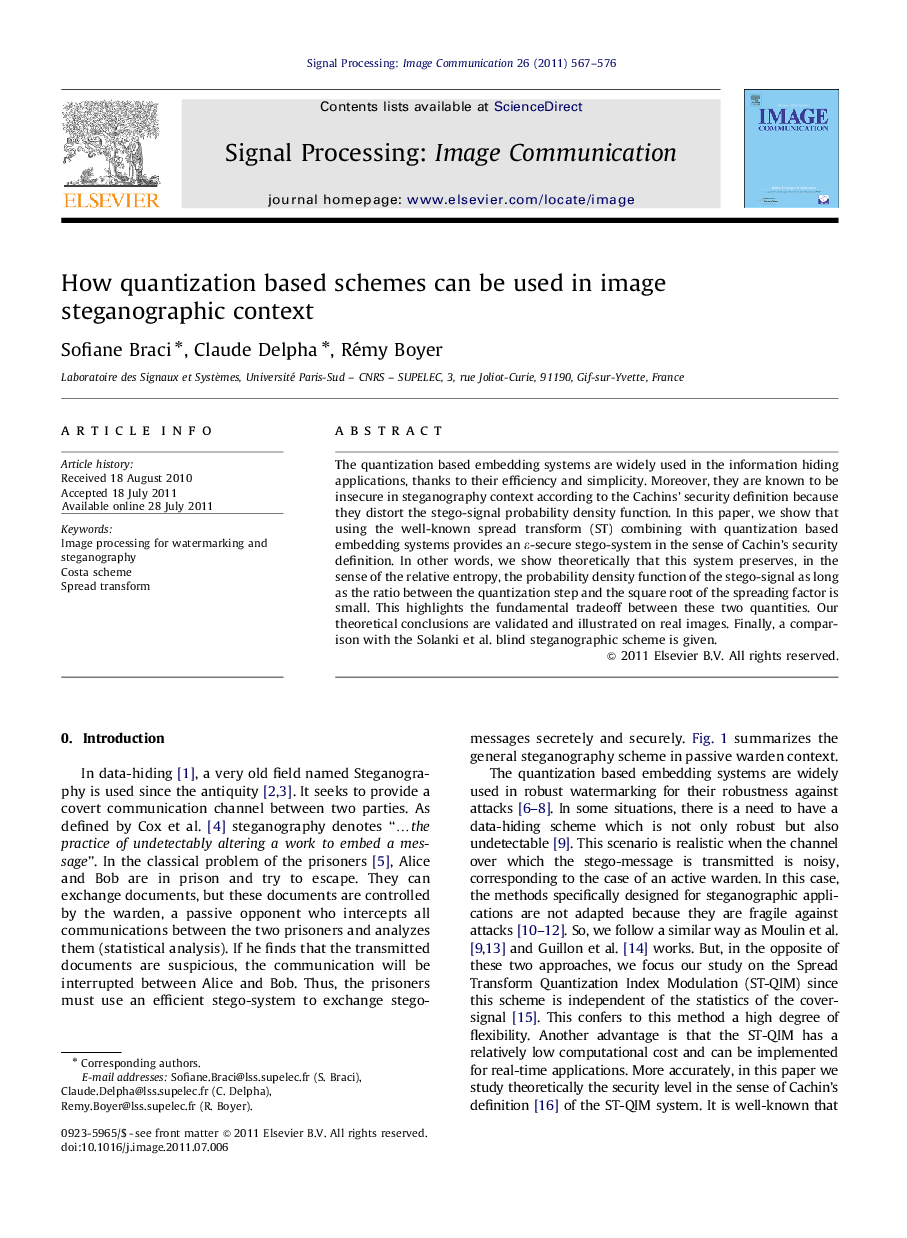| کد مقاله | کد نشریه | سال انتشار | مقاله انگلیسی | نسخه تمام متن |
|---|---|---|---|---|
| 538405 | 1450148 | 2011 | 10 صفحه PDF | دانلود رایگان |

The quantization based embedding systems are widely used in the information hiding applications, thanks to their efficiency and simplicity. Moreover, they are known to be insecure in steganography context according to the Cachins' security definition because they distort the stego-signal probability density function. In this paper, we show that using the well-known spread transform (ST) combining with quantization based embedding systems provides an ε-secureε-secure stego-system in the sense of Cachin's security definition. In other words, we show theoretically that this system preserves, in the sense of the relative entropy, the probability density function of the stego-signal as long as the ratio between the quantization step and the square root of the spreading factor is small. This highlights the fundamental tradeoff between these two quantities. Our theoretical conclusions are validated and illustrated on real images. Finally, a comparison with the Solanki et al. blind steganographic scheme is given.
► We show how to get Cachin's security for quantization based stego-systems by using spread transform.
► The theoretical proof of the efficiency of the proposed approach is given.
► Relative entropy is presented and link between PDF, quantization step and spreading factor is given.
► The message spreading smoothes the stego-signal PDF and makes it close to the cover-signal ones.
► A tradeoff between the quantization step and spreading factor is discussed and validated on images.
Journal: Signal Processing: Image Communication - Volume 26, Issues 8–9, October 2011, Pages 567–576